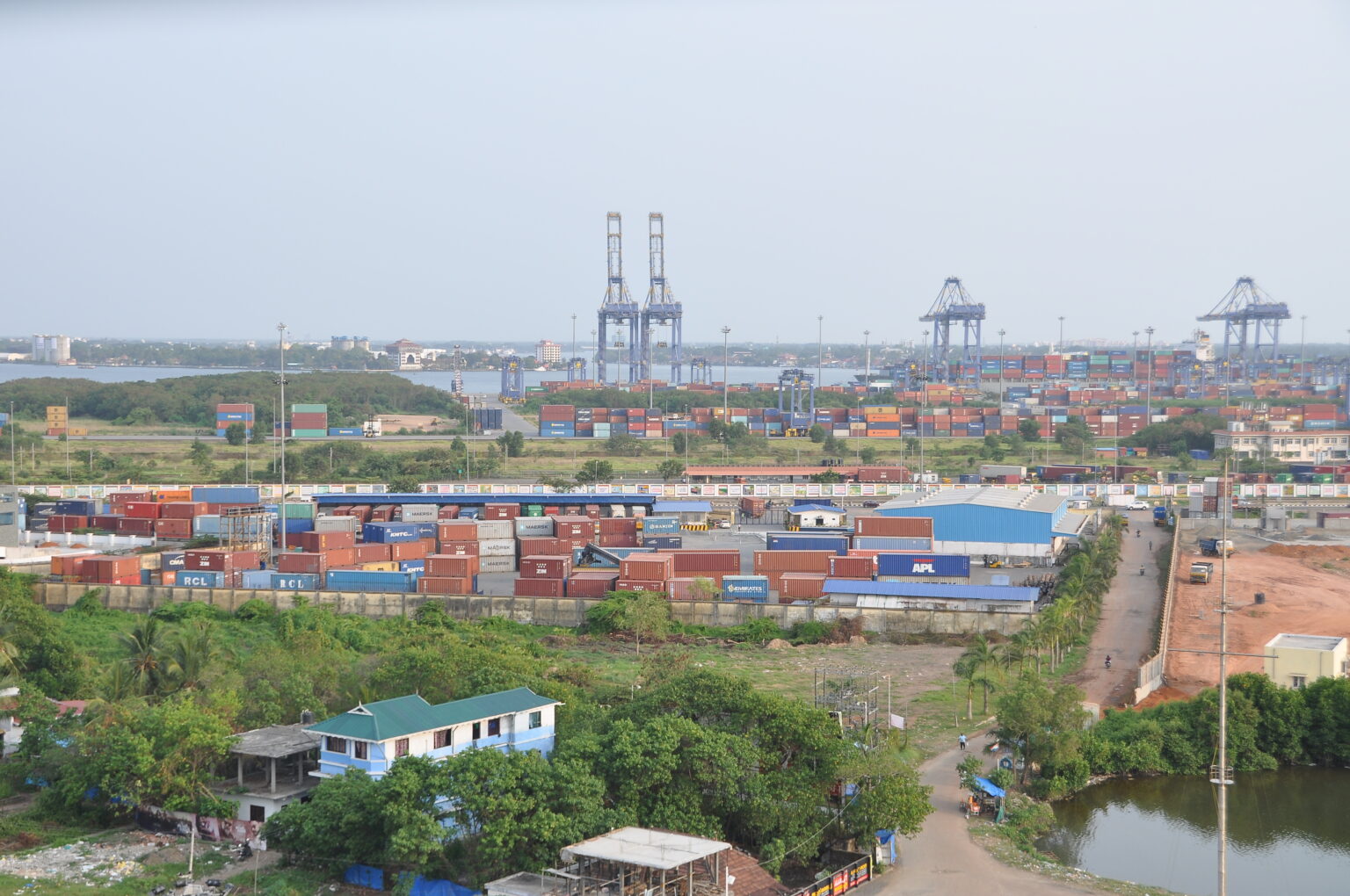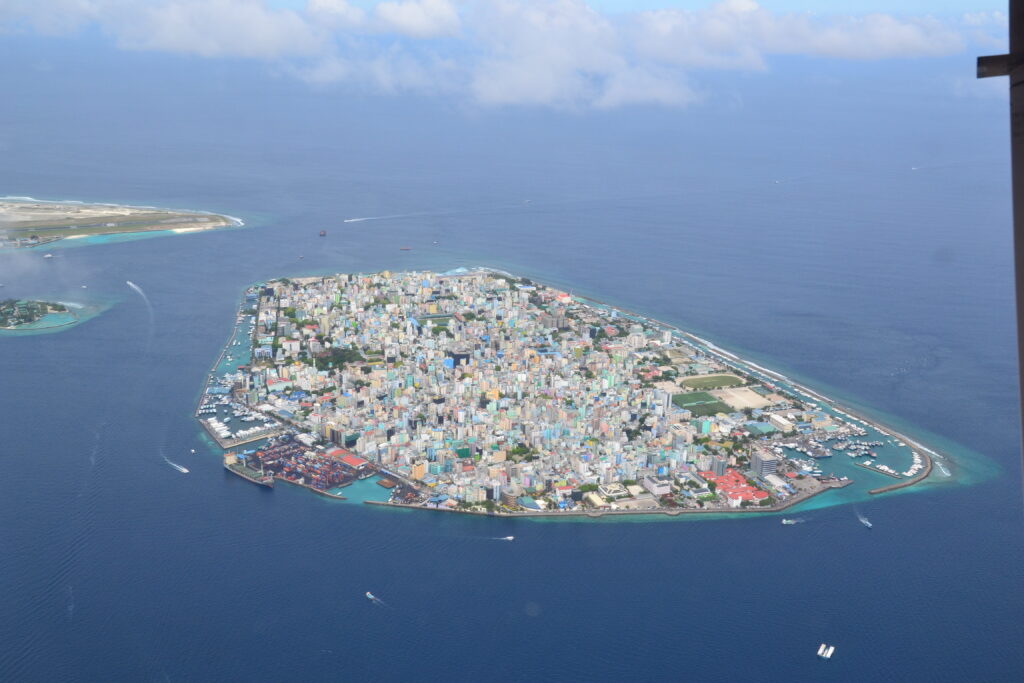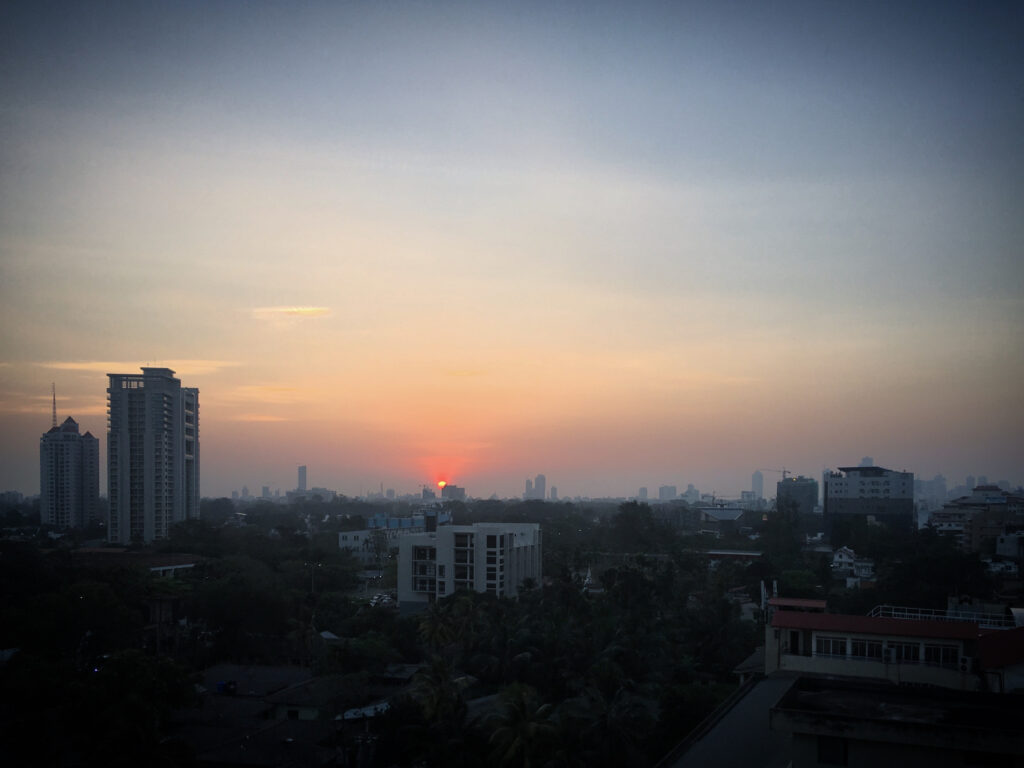In With The New
Upgraded port infrastructure is coming online in India, which should be a boost for bunkerers, as John Rickards writes.

India’s long-delayed transshipment port at Vizhinjam in southern Kerala finally welcomed its first commercial container vessel call from Maersk this July. Operator Adani Ports Group said, “the strategic port is positioned to emerge as a critical player in the international trade corridors” and its first operations ahead of expected full phase one completion and opening by the end of the year were “a milestone event marking India’s entry into global transshipment… positioning Vizhinjam as a critical player in the international trade routes.”
Currently, 25% of India’s container traffic is transshipped en route to the destination, but the country hasn’t had a dedicated transshipment port, and three quarters of the country’s transshipped cargo is being handled by hub ports elsewhere.
Karan Adani, managing director of Adani Ports and SEZ said: “[The first container ship to visit the port] is a messenger that will tell the world that India’s first transshipment terminal and the largest deepwater port has begun commercial operations.”
It’s also India’s first “automated” port with state-of-the-art infrastructure and facilities capable of handling large ships, with modern container handling equipment and “world-class” automation and IT systems.
“No other port in India – including our own highly advanced Mundra Port – has these technologies,” Adani said. “What we have already installed here is South Asia’s most advanced container handling technology. And once we complete the automation and the Vessel Traffic Management System, Vizhinjam will be in a class of its own as one of the most technologically sophisticated transshipment ports in the world.”
With much of India’s bunker market centred on vessels calling for cargo rather than bunkers-only, an uptick in vessel traffic calling directly and increased internal trade as transshipped cargo is delivered to other ports is only going to boost bunker sales in the country, while having a newer port with modernised facilities will also make it easier to adapt to new fuels.
The Adani Group itself is one of India’s main bunkerers, and its chairman Gautam Adani went on record at the turn of this year in firm favour of India producing green hydrogen fuel – unsurprisingly, given an arm of the group is already building a million-tonne-per-year green hydrogen plant in Gujarat due for startup in 2027 whose planned final form, producing triple that, could cost up to US$50bn – but also urging India to skip transitional fuels to go right to the end goal.
In an essay for the World Economic Forum, he said: “For India, the equitable solution is not to replace one fossil fuel with another but to leapfrog to renewables and green hydrogen. The decrease in solar costs can be replicated with green hydrogen. This shift will help India achieve energy security and improve air quality in its cities. It will also contribute to food security by eliminating the uncertainties of imported ammonia prices, a crucial component in fertilisers. Most importantly, it will offer the world a chance to avert the adverse impacts of climate change.”
The overall sense of new development and potential for change in the bunker sector does seem to be reflected in sentiment on the ground.
Visakhapatnam-based supplier Green Fuels International spoke to World Bunkering and seemed optimistic about the company’s own prospects and also the national market’s future as a whole.
“With rapid growth in infrastructure, including new ports developments, and the improved efficiency of existing ports along India’s coastline, the forecast for the Indian bunker industry is quite buoyant,” a spokesperson told World Bunkering. “Green Fuels, one of India’s leading bunker fuel suppliers, is mobilising its resources to take a major slice of the growth market.”
Currently, trade patterns across the Indian Ocean have been heavily affected by Houthi attacks in the Red Sea, and while India’s bunker market is dominated by cargo calls rather than bunker calls for ships on the main east-west trades, those shifts have still had an effect – but not a huge one.
“India being a growth country, global challenges get mitigated by its growth potential,” Green Fuels explained. “With increased port connectivity and infrastructure, there is increased traffic of vessels calling at Indian ports. New ports are going to be future high growth opportunities for the bunker fuel industry. Green Fuels, as an enterprise made in India, shall make every effort to seize every opportunity to gain a stronger foothold in this fast-growing market.”
Government aims to modernise the industry and moves towards a cleaner sector and decarbonisation were also welcomed by the company.
“While India is poised for increased fossil fuel consumption over the next decade, there has been an increased push from the government and various sectors for decarbonisation, including in the bunker industry. India is making a leap in biofuels, and at Green Fuels we are working to be at forefront of this transition. While the transition is quite challenging, it is equally an opportunity to create value for our customers.”
Neighbouring Pakistan has been weathering a financial crisis for the past couple of years. Inflation is slowly coming down. In July, the government was able to pass a budget aimed at sharply increasing taxes to cut its deficit, a budget which was enough for an IMF to stop the country defaulting on its debt and being plunged into a fresh crisis.
But while the picture is maybe rosier than last year, this means the economy is still on fragile ground, growth in part dependent on ongoing Chinese support for its mining and infrastructure industries, and its bunkering sector is still dominated by ships taking import/export cargoes. On top of that, fuel availability has long been an issue, with Pakistan’s national refinery producing VLSFO somewhat patchily. World Bunkering spoke to Zishan Arshad, director at Orion Bunkers, to get a clearer picture.
WB: What’s the current state of the Pakistan market as you see it? How does business currently look for Orion?
ZA: The Pakistan market is doing quite well. We are seeing strong demand. However, supply side issues persist as only one refinery is producing VLSFO. Another refinery also started production, but the cost wasn’t in place, so they stopped production. As far as Orion business is concerned, we are still holding 70% of market share and growing.
WB: Has the region’s bunkering been affected by trade shifts in the Indian Ocean due to the attacks in the Red Sea, or is it still broadly dominated by ships calling at Pakistan’s ports for cargo?
ZA: The Red Sea attacks did not affect bunkering in Pakistan. As per data, most vessels taking bunkers from Pakistan are calling from Africa, India, Colombo, Bangladesh and Fujairah. And the majority of vessels doing cargo work are stemming.
WB: What’s the outlook for the sector in the coming months?
ZA: The demand is strong persistently, the only problem we still have is limited supplies from the refinery. Going forward, we don’t see any improvement on the supply side. However, we are still optimistic that in the coming years we will have additional supplies from other refineries.
Sri Lanka has been in the grip of its own financial crisis for the past year or so and is still clawing its way back from the brink of economic implosion – at the time of writing, the government is in talks with international bondholders about restructuring billions of dollars of debt to save a huge amount in write-offs and deferred payments; it owes US$37bn in all.
It should be good news then that Hambantota port has continued to see a steady increase in bunkering traffic, following the trend since Sinopec relaunched bunkering at the then-troubled and still hugely under-utilised mega-port five years ago.
Hambantota International Port Group recorded over 300 oil and gas cargo vessel calls in 2023, a 132% increase on 2022, which HIPG credited to Sinopec’s bunkering operations. Total products throughput – though not, presumably, direct supply; the port issues two sets of figures with very similar labelling – was 918,000 MT, of which 700,000 MT was bunkers and 218,000 MT LPG cargoes; that 700,000 tonnes was 250% up on 2022’s figure and represented 114 bunker vessel calls.
“We are looking at the energy sector as a growth market for HIP and are actively promoting it. We expect these figures to more than double in the current year. With Sinopec partnering with HIP, we are changing the dynamics of bunker supplies in the Indian Ocean, adhering to the highest levels of health & safety,” said Tissa Wickremasinghe, COO of HIPG.
“We are moving forward amidst an economic downturn and a dollar crisis in Sri Lanka, continuing to provide services without interruptions. The Palestine and Ukraine wars have also impacted the oil market contributing to a surge in global prices. We have achieved our target volumes, in spite of these crises. With major projects and developments in infrastructure occurring simultaneously, the port manages vessel operations, handles manpower efficiently, and we have achieved all of this within a completely accident-free environment.”
That trend has continued into 2024, in line with the port’s targets. Second quarter figures showed bunker supply volumes up 128% and LPG volumes nearly doubling. Bunker supplies within the port, at anchorage, and in outside port limit areas reached 66,044 MT within the first five months of 2024, compared to 28,923 MT handled during the same period last year. These figures are obviously very low in the grand scheme of things, but Hambantota is coming from a very low base, and its fuel storage business is obviously doing decently well to support those much larger headline figures mentioned before.
“2024 is a year of significant achievements for our energy services, and we are strongly reinforcing the port’s position as a strategic energy hub in the regional and global maritime landscape, under the China Merchants Group and Sri Lanka Ports Authority,” said Li Yongzhuang HIPG’s general manager for energy services.
HIPG CEO Johnson Liu added: “We are actively promoting the energy sector as a growth market for HIP and expect these figures to continue rising. We are confident of meeting our target annual oil and gas volumes by the end of this year.”
Sinopec isn’t the only bunker supply operating out of Hambantota. The most recent addition is Maldives-based supplier The Hawks, which already operated out of other Sri Lankan locations, principally Colombo, and in March moved a bunker barge to the southern port, describing it as a “prime location [that] grants foreign going vessels minimise diversions, save time and fuel”. The company is now looking to expand further east into Malaysia and reportedly sees 40,000 tonnes per day in fuel sales, but in July also strengthened its Maldivian fleet with the addition of a further bunker tanker for LSMGO supply across the archipelago.
However, the company may soon have local competition. Earlier this year, the Maldives State Trading Organisation announced a partnership with energy trader Vitol to establish an international bunkering hub in Ihavandhippolhu Atoll.
“Under the partnership, Vitol will market Maldives as a bunkering hub in the Indian Ocean and will help develop our technical capability in the industry,” the STO said in a statement. “Ihavandhippolhu Atoll is a key area of the government’s strategic plans to diversify the economy. The area has been designated as the Maldives Economic Gateway and is planned to have an international port, strategic oil terminal and other maritime activities.”
The Maldives, in theory, enjoys many of the same geographic advantages as Hambantota and Mauritius, in that it sits reasonably close to main shipping routes. However, the amount of additional infrastructure needed to make these ambitions a reality is huge, and it seems unlikely that the islands will become a major regional bunkering hub any time soon.
Image Caption: India’s ports have been dogged by infrastructure issues, but new developments are steadily coming.
Image Credit: Shankar S/CC-BY

Image Caption: The Maldives might seem an unlikely bunkering hub,
but the country’s government is keen.
Image Credit: Simon_Sees/CC-BY

Image Caption: Sri Lanka is still emerging from its financial crisis but there are some green shoots.
Image Credit: Sergei Gussev/CC-BY
13/09/2024
get
in touch

Constructive Media
Constructive Media
Hornbeam Suite
Mamhilad House
Mamhilad Park Estate
Pontypool
NP4 0HZ
Tel: 01495 239 962
Email: ibia@constructivemedia.co.uk

On behalf of:
IBIA London Office
Suite Lu.231
The Light Bulb
1 Filament Walk, Wandsworth
London, SW18 4GQ
United Kingdom
Tel: +44 (0) 20 3397 3850
Fax: +44 (0) 20 3397 3865
Email: ibia@ibia.net
Website: www.ibia.net

Emails
Publisher & Designer: Constructive Media
ibia@constructivemedia.co.uk
Editor: David Hughes
anderimar.news@googlemail.com
Project Manager: Alex Corboude
alex@worldbunkering.net
